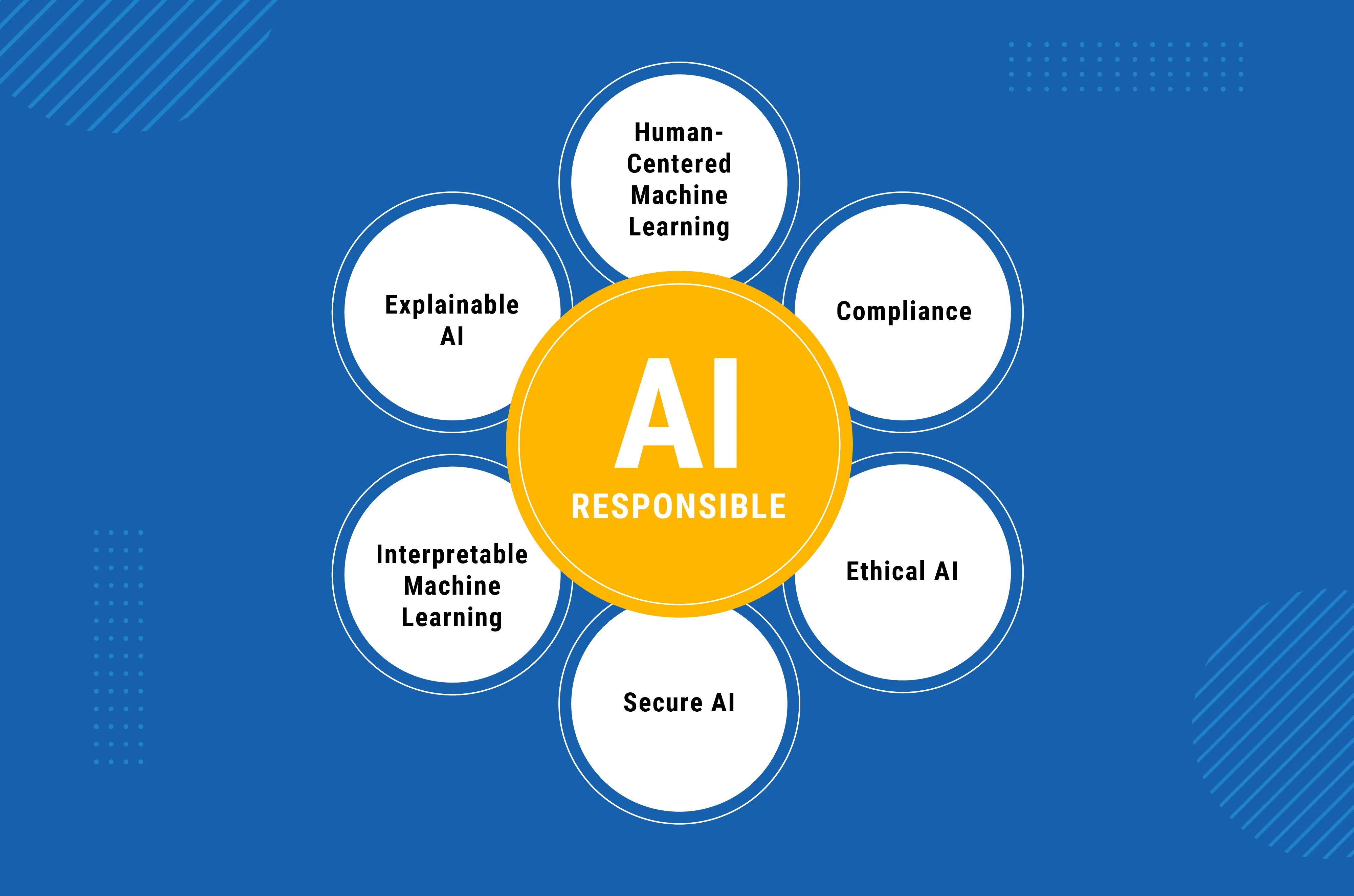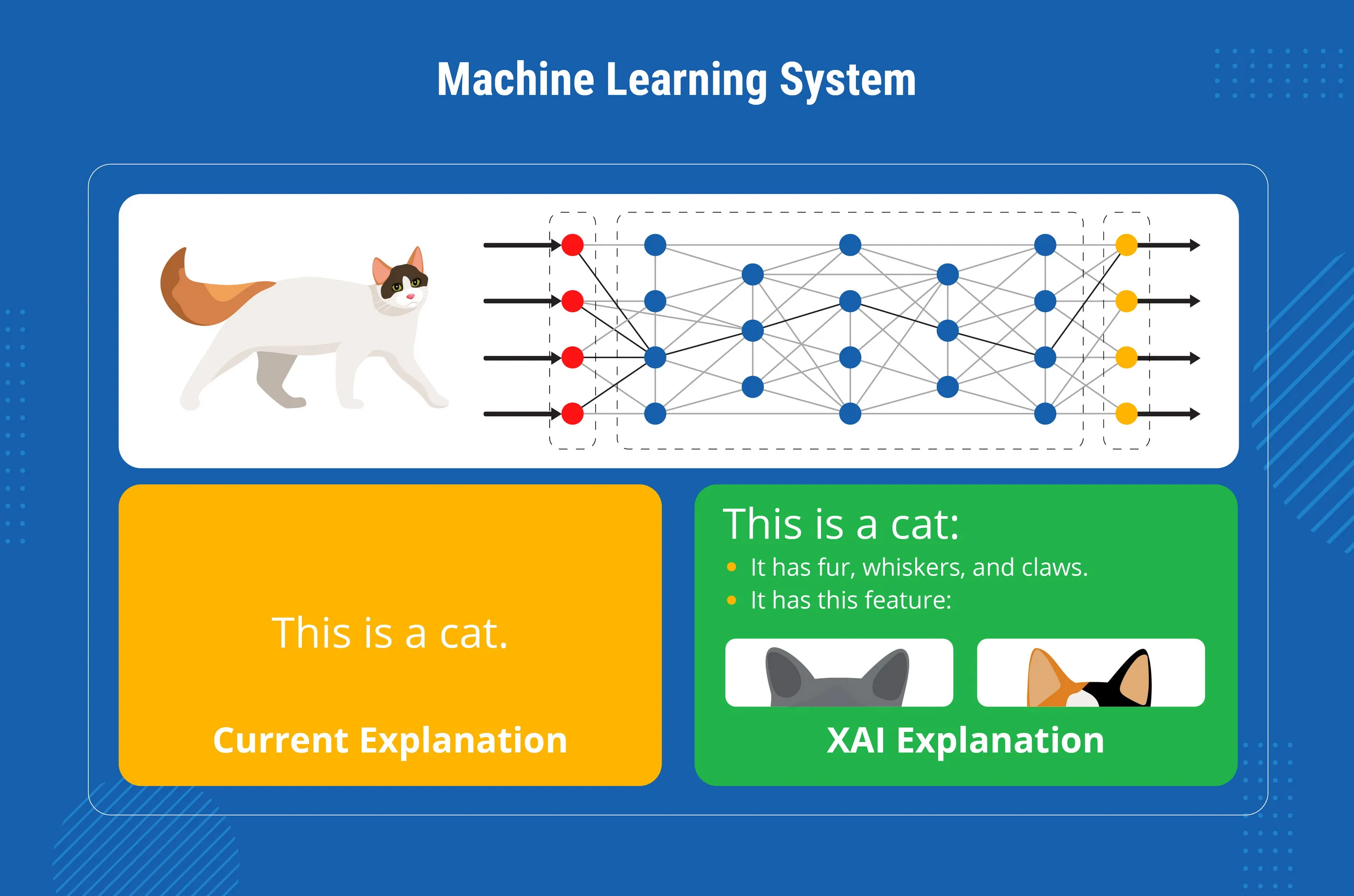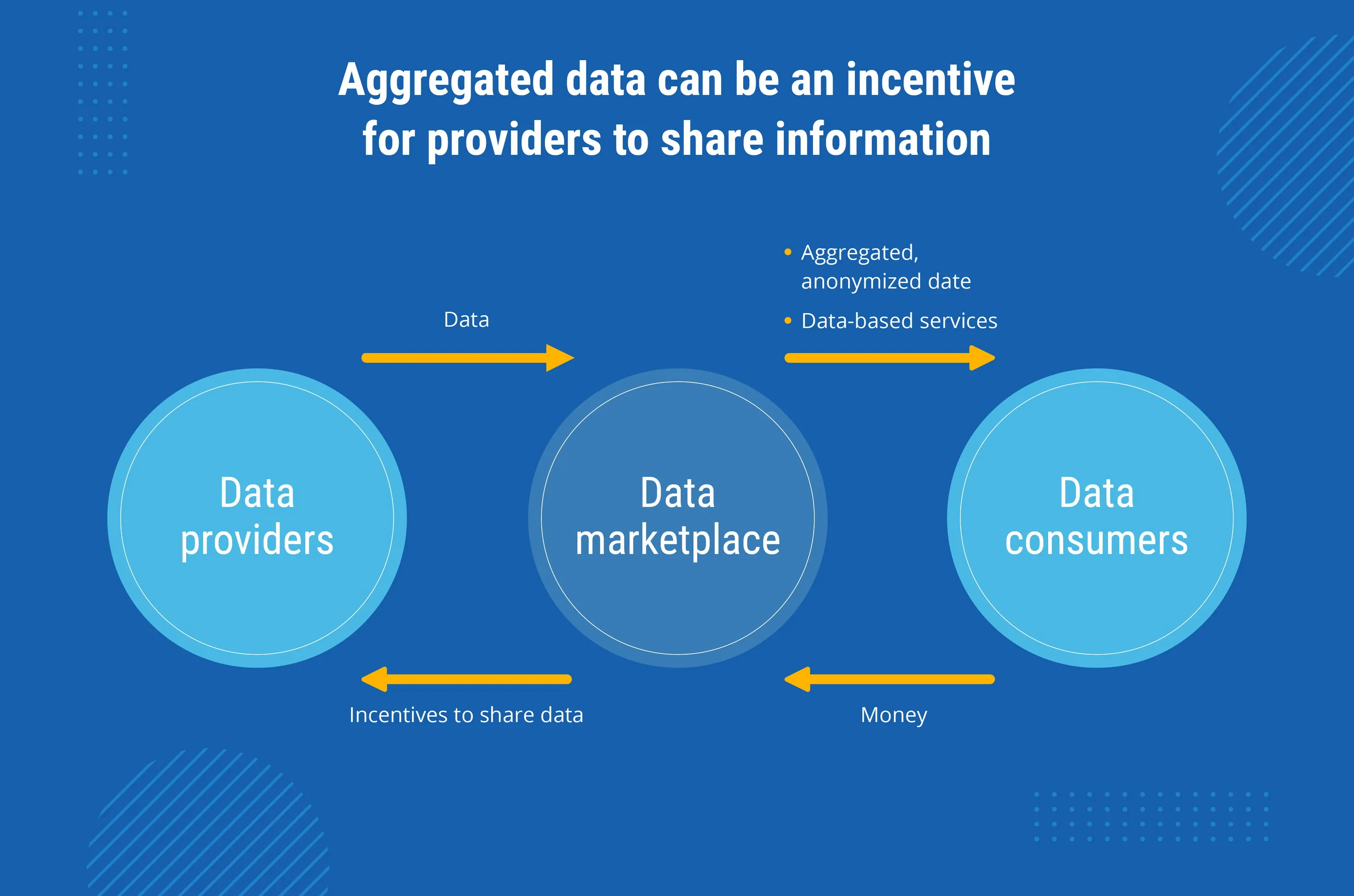Top Data Science Trends in 2025
Table of contents
- Top Data Science Trends That Can Make Your Business Rock: Don’t Miss Them!
- Moving to Responsible AI Through XAI
- So what is responsible AI?
- What is XAI?
- Decision Intelligence Counting Human Judgements
- How does decision intelligence work?
- Why does your business need decision intelligence?
- X Analytics Spreads From Global to Specific Business Issues Solving
- Defining X Analytics
- How does X analytics help?
- Augmented Data Management for Smart and Risk-Free Automation of Data Management Tasks
- What is augmented data management?
- The Rise of Data Marketplaces and Exchanges
Top Data Science Trends That Can Make Your Business Rock: Don’t Miss Them!
Currently, there are many talks around the shift to the era of data, and for good reasons. We live in a time where data flow is greater than ever before, and what’s more important, the advance of technologies allows capturing it and analyzing to receive valuable insights into literally anything. So there’s no wonder why such domains as data science gain momentum, each year offering new ways and approaches on how to take advantage of these flows to achieve the desired results.
Companies that have leveraged data science to business make better products, manage their processes in an efficient manner, make smarter data-driven decisions, can predict outcomes, and enjoy a great number of other benefits. And, considering the current state of the world where it’s vitally necessary to respond to the coronavirus impact with rapid and smart decisions, the value of data science cannot be overstated.
In this post, we are going to disclose the top trends in the domain that have a potential to ensure your business well-being at the hardest times. Learn how to control costs and maintain liquidity, define right priorities while staying agile, and adjust to ongoing changes with the occurring trends in data science.
Moving to Responsible AI Through XAI
According to PwC’s Global Artificial Intelligence Study, in less than 10 years, AI would become the key driver of GDP growth globally. It means that the adoption of this technology is going to increase rapidly and will probably lead to the situation when AI-enabled businesses may feel broken.
Even when leaving predictions aside, it’s clear that today the impact of AI is transformative, especially to commercial and public sectors with chatbots, autonomous cars, and other advances. But along with the beneficial potential of their use, there are certainly some downside effects, including autonomous car incidents and cases when chatbots learn offensive language, ruining business reputation. But still, these are exactly such downsides that contribute to further development and improvement of the technology, driving humanity to the need of responsible AI.
So what is responsible AI?

The idea standing behind the responsible AI is made up of elements that ensure ethical, transparent, accountable use of the technology that not just meets user expectations but also goes in the line with the organizational identity and values, as well as societal norms and laws.
Responsible AI will offer a business a number of great benefits, including:
- Better and more trustworthy human-machine interactions;
- Elimination of biased data and algorithms;
- Increased privacy and security;
- Increased user trust achieved through clear rules of engagement;
- Justified and explainable automated decisions.
The latter benefit, which is going to protect an organization from making poor decisions through its explanation, is exactly the case of XAI.
What is XAI?

Quite soon (and it already happens right now) AI-powered applications will have a great impact on our lives, making a lot of critical decisions for people. So the key concern here is that to rely on technology, we need proof that the generated decision is sound. And the best way to ensure its accuracy is to make AI’s functioning clear and easy to understand, and it’s all about Explainable AI.
There are certain developments in this direction that we witness today. For example, there’s a technique named SHAP that unifies the measures of feature importance to address the issue of data discrimination. There are also developments of the state of the art XAI by Google (now it’s in a beta stage) that uses a ‘What If’ tool together with a continuous evaluation process. And for sure, there are lots of other concepts that are going to evolve into a fully-functional XAI system in the near future, which, in turn, will someday result in the creation of Responsible AI technologies. Just wait for it.
Decision Intelligence Counting Human Judgements
One more arm of the AI we know today is represented by decision intelligence — now a trending field that opens up space for various methods for decision-making: designing, modeling, aligning, executing, and tracking both decision models and processes. It’s key value and idea is based on the perception of how actions lead to outcomes. In other words, decision intelligence (DI) can be considered as an action intelligence.
The key benefits of using decision intelligence solutions in business include:
- The accuracy of decisions;
- Facilitated decision-making process;
- Elimination of errors like biases;
- Accounted human judgments (like intuition).
How does decision intelligence work?

In general, decision-making practices at organizations face the challenges of complicated systems and the complexity of situations that require prompt decision-making. However, decision intelligence solutions solve both by following a well-thought-out process that starts with observation, continues with investigation, modeling, contextualization and, finally, execution of decision — all happening in and processed by the machine. In this way, DI allows fast and smart decision-making that leads to the desired outcomes and business profits.
Why does your business need decision intelligence?
The key driver for the implementation of DI solutions is, for sure, constantly and rapidly growing amounts of data that can’t be processed with human force but can easily be handled by machine learning algorithms. Still, as DI does not eliminate factors of human contribution to decision-making such as intuition, it can be seen as a provider of valuable insights and support for this crucial to business process.
Still, the most obvious sign that you need to consider DI for business is that such giant as Google has already trained over 17,000 engineers in DI, and Alibaba runs a decision intelligence research lab, which means that in the upcoming future other retailers will probably replicate this practice.
X Analytics Spreads From Global to Specific Business Issues Solving
Previously, X analytics was mainly used by data science leaders to solve the toughest challenges of the society. It was applied to such issues as climate change, wildlife protection, and disease prevention. When it comes to the latter, X analytics found its value in the measures taken against coronavirus spread, identification of vulnerable populations, finding treatments, etc. So what is X analytics and how does it differ from other analytics methods?
Defining X Analytics
As Gartner stated, X analytics is an umbrella term that refers to the ability to analyze data of any format (video, audio, images, text files, etc.), regardless of where it resides. It covers structured and unstructured data, a new and core one. In other words, X analytics can be considered as one of the most comprehensive approaches for capturing and analyzing data.
One of the key challenges addressed by X analytics is that data is rarely stored in a single place. For example, if we take an average organization, data will split between cloud data lakes, traditional data warehouses, and on-prem data lakes - and in most cases, in completely different formats. To capture and process all these data to receive valuable insights, companies tend to look for ways of establishing a single source by moving semi-structured, structured, unstructured data into one place. And, for sure, such attempts often resulted in increased costs.
How does X analytics help?
With X analytics in place, there's no necessity in a single source for data storing. Instead, this method implies a single point of access, providing your business intelligence analysts and data scientists with a consistent, unlimited access to it within a query.
It’s true that Z analytics is not about speed. Still, it offers competitive business benefits.

It’s worthy of mentioning that X analytics does not serve as an exclusion for the use of other analytics methods, such as predictive and descriptive ones. Instead, used together, these methodologies allow businesses to increase the number and value of possible benefits. Still, the key point is that it is exactly X analytics that is going to spread across enterprises in the coming years and months, which means that the best time to consider is as the option for your business growth and adaptability is now.
Augmented Data Management for Smart and Risk-Free Automation of Data Management Tasks
It’s no secret that data ingestion and preparation processes require a high level of involvement from data science specialists and engineers, not allowing them to put their efforts into the accomplishment of other crucial tasks. And for sure, this results in the overall decreased business efficiency and productivity.
Luckily, today companies can take advantage of augmented data analytics that serves as a great assistant in the entire process of dealing with flows of data, from data collection to the provision of insights and recommendations. And it is exactly augmented data analytics that gave a spur to one more, closely related methodology — augmented data management.
What is augmented data management?
Leveraging AI and ML to various aspects of the enterprise data management, including information quality and integration, metadata management, master data management, etc., augmented data management literally revolutionizes the information management field. It is capable of automatic detection and analysis of data usage, allows finding data relationships, provides advice on necessary actions, and contributes to smarter and more efficient data management. Here are the key processes covered:
Business Benefits of Augmented Data Management: Why Do You Need It?
The introduction of ADM to business is a good decision for the automation of data circulation processes and elimination of the complexities related to information. Still, there is a great number of other significant advantages a business can reap from the implementation of ADM technology, including:
- Smarter, more accurate, scalable, and facilitated decision-making;
- Provided ability for accurate anomaly detection and correction;
- Ensured security for high quality data that can be analyzed in real-time and contribute to faster decision-making;
- Decreased costs of business operations due to breaking down of data silos;
- Capacity to convert metadata that can further be used for audit, lineage, and reporting;
- Provided support to data science specialists and data engineers;
- Improved efficiencies, elimination of mistakes, and facilitated availability of data.
While augmented data management discipline is still in its early stages of development, Gartner states that by 2022, machine learning and automated service-level management will contribute to the 45% decrease in the data management manual tasks. In the upcoming years, ADM solutions will become a must-have for both small and large organizations, giving companies that have implemented them firsthand a significant competitive advantage.
The Rise of Data Marketplaces and Exchanges
The last data science trend to discuss turning around the value of data that can be sold by one organization to another though third-party vendors is data marketplaces and exchanges. And the best thing about it is that the benefits of this model are offered to every link in this chain.

The key idea behind this phenomenon is to provide centralized availability and access to analytics (such as the previously-discussed X analytics) and other data sets to reduce the cost of third-party data and promote its sharing for valuable insights.
While for sure, the list of data science trends can be continued with other advances, paying attention to at least these five can help your business to get prepared for the upcoming changes. Also, if you want to learn more about innovative data solutions or opt for some, we are always here to provide you with consultation. Feel free to contact us at any time, and thank you for reading.
Updated on Apr 3, 2025





